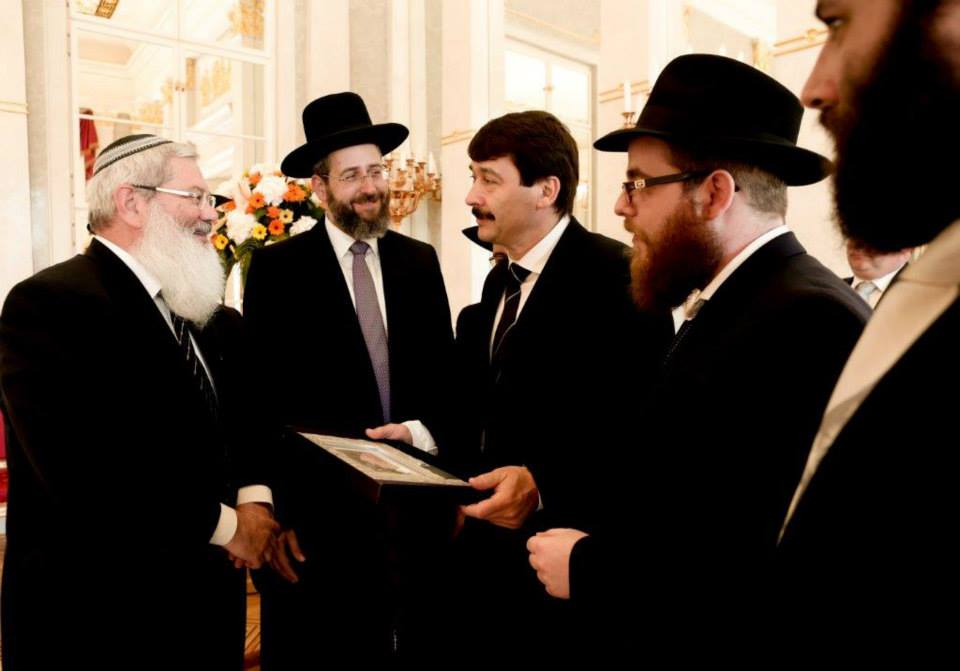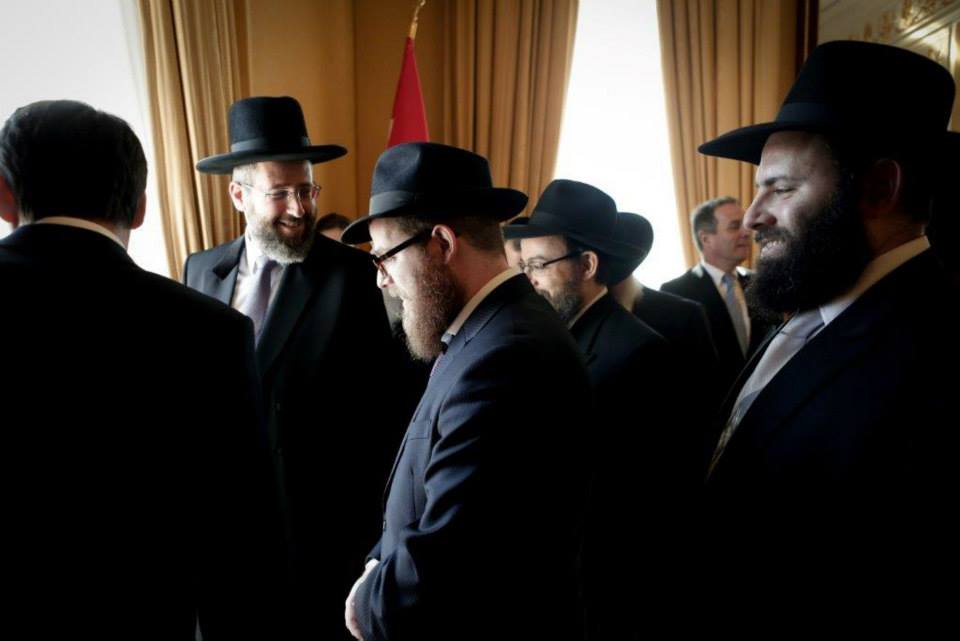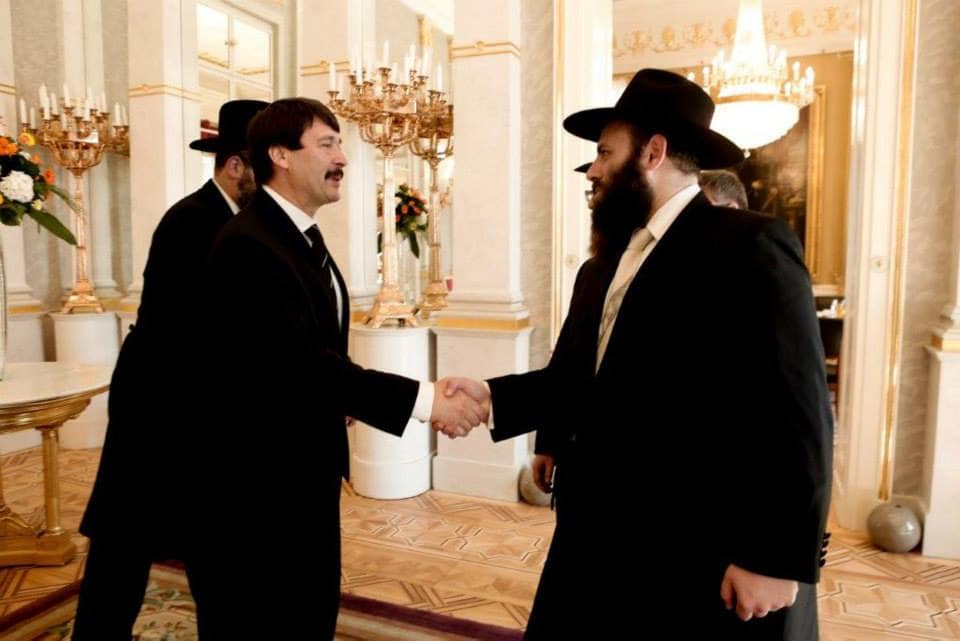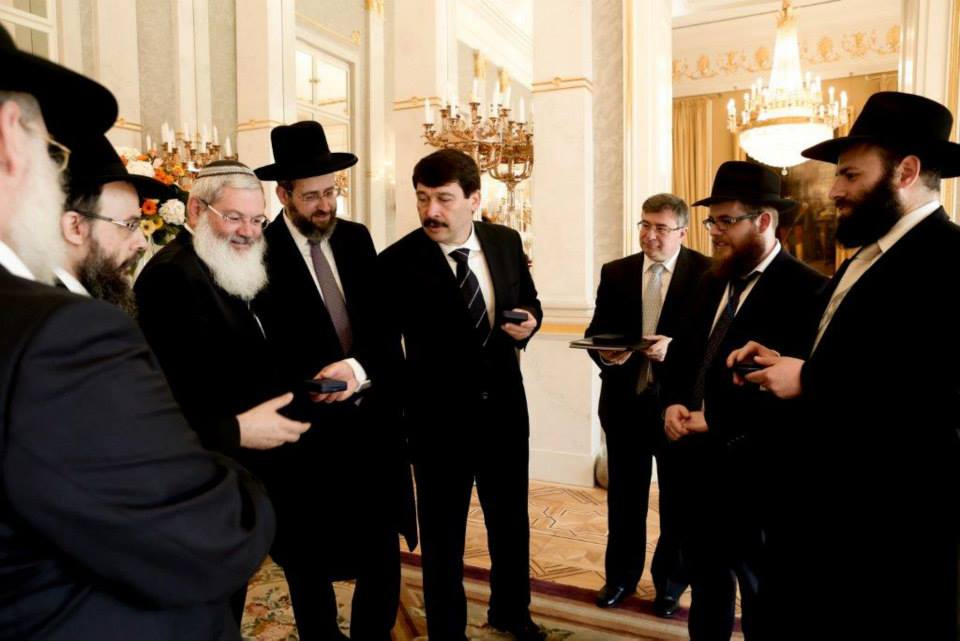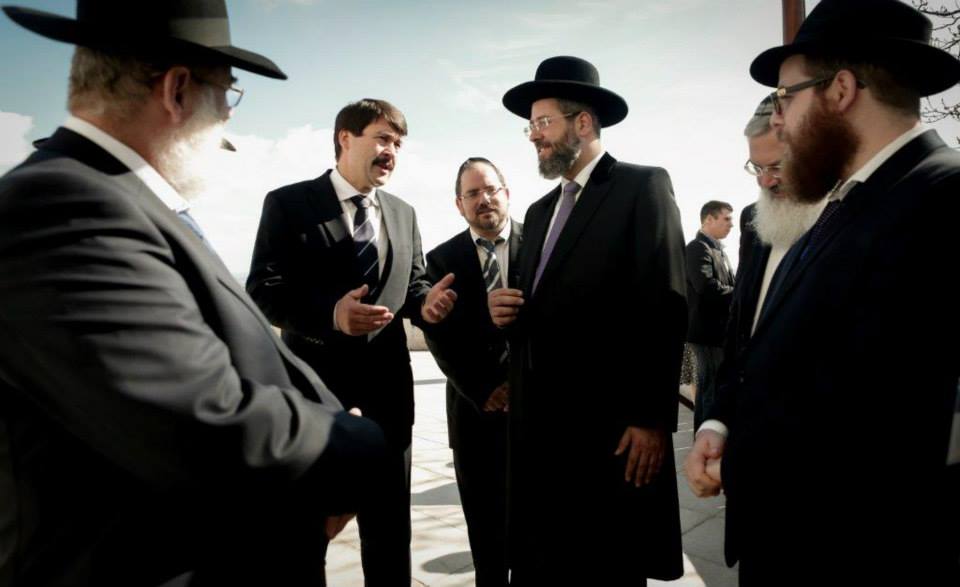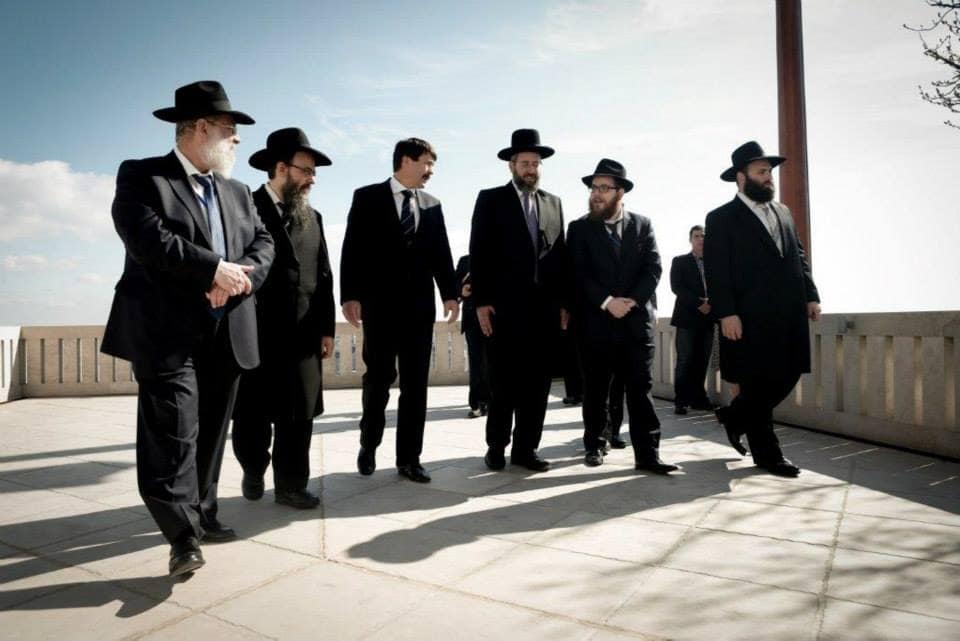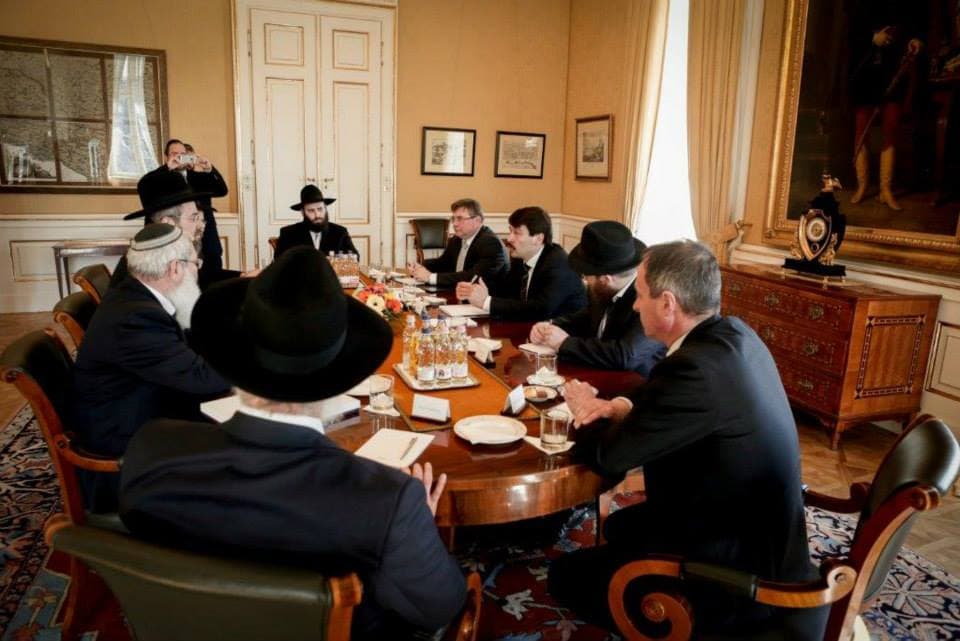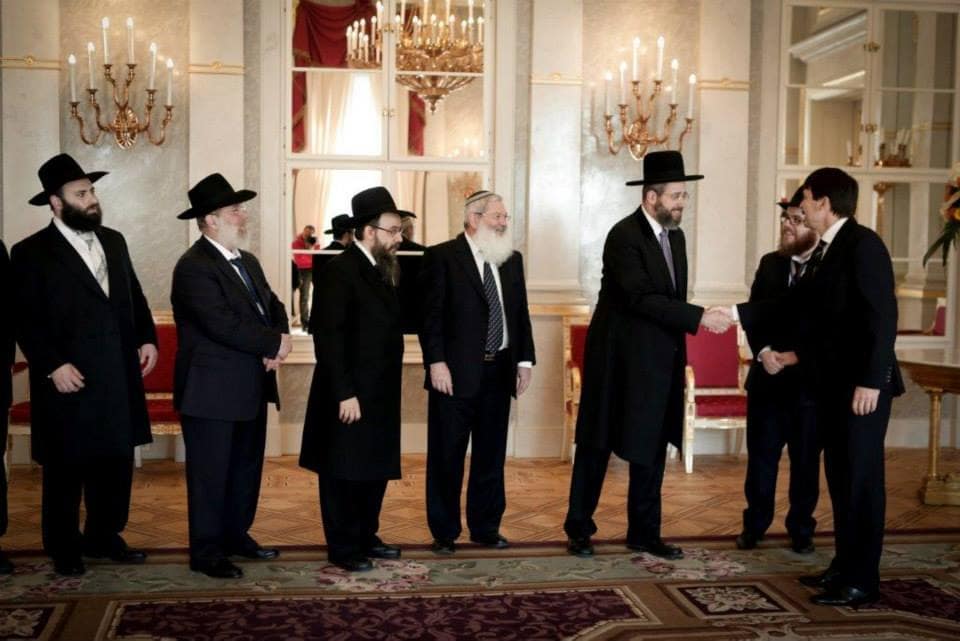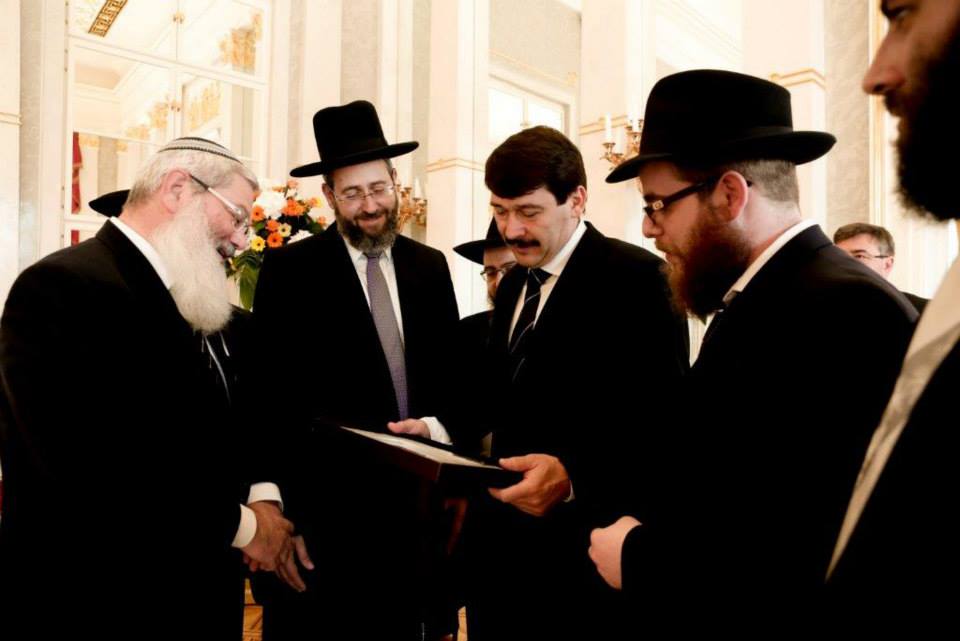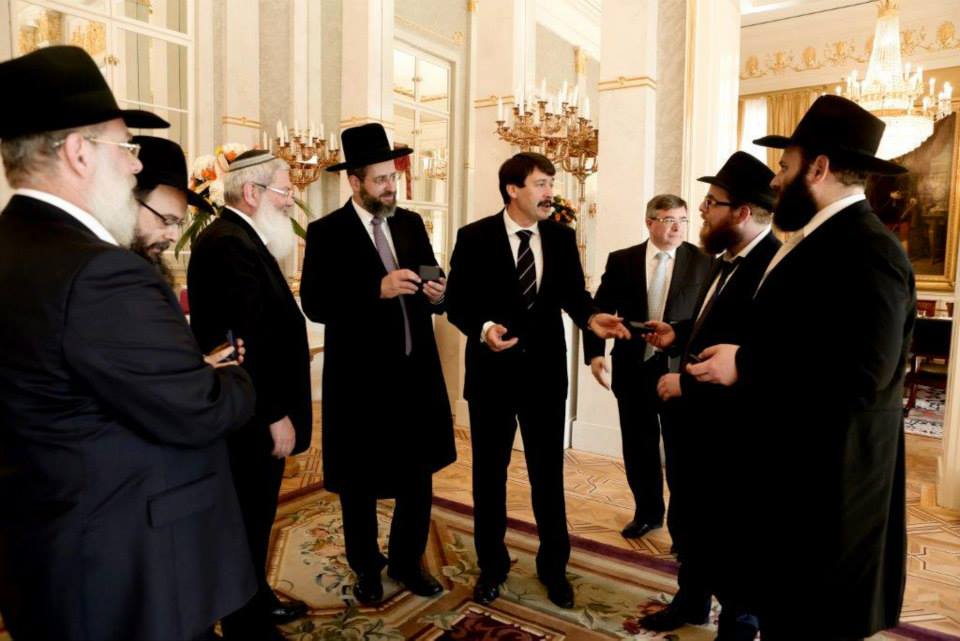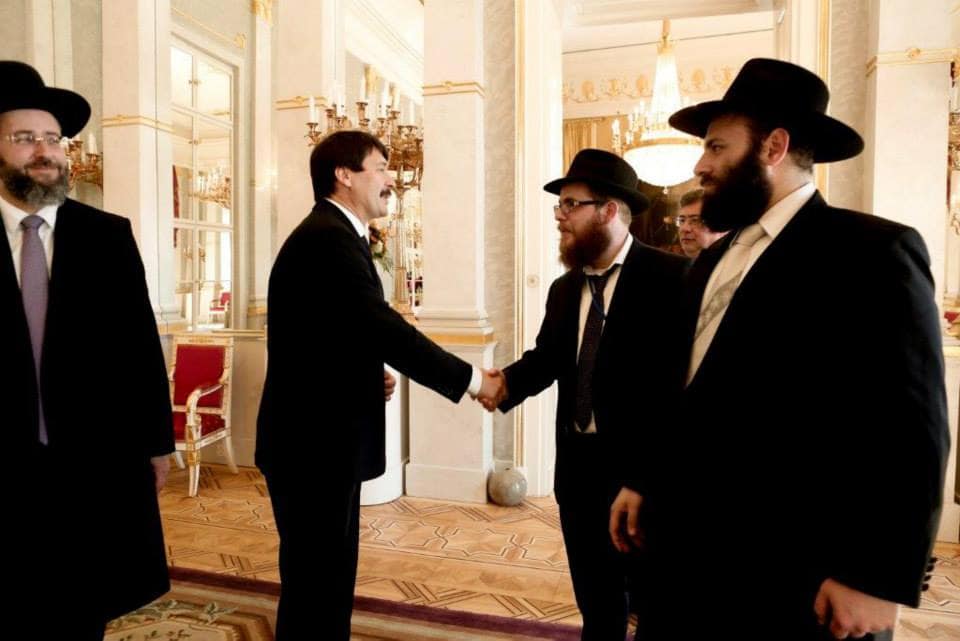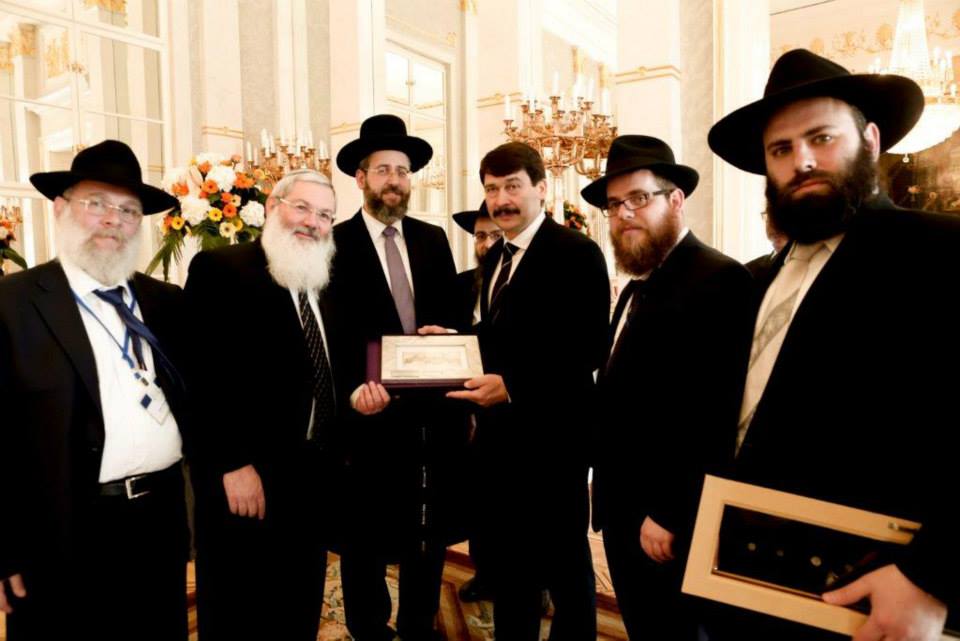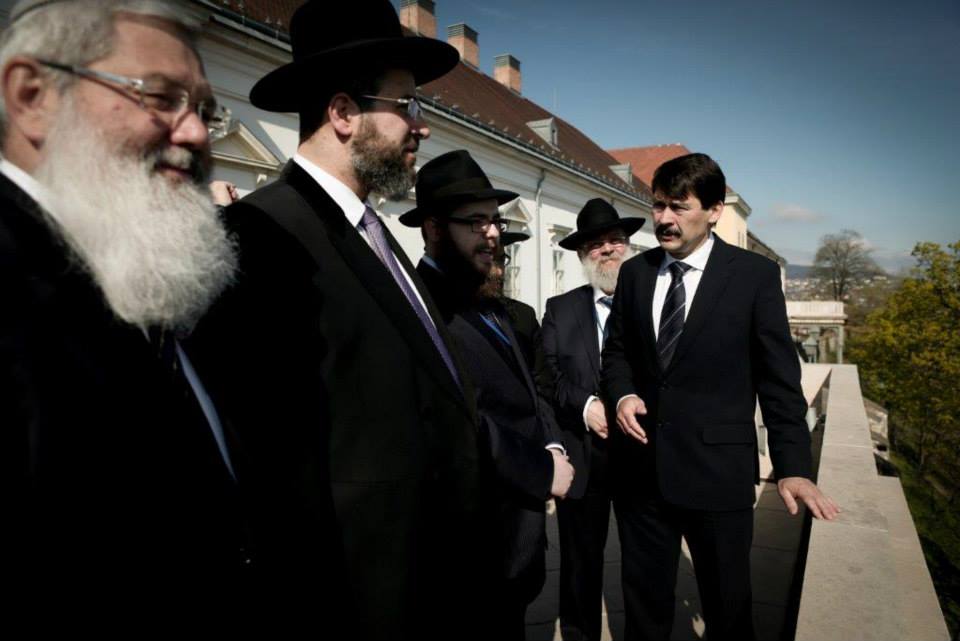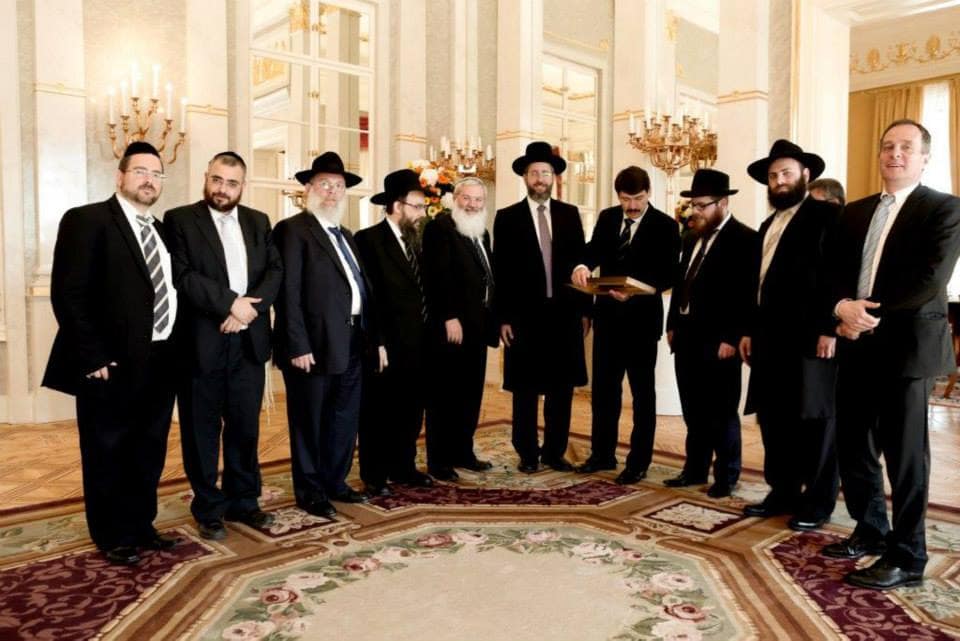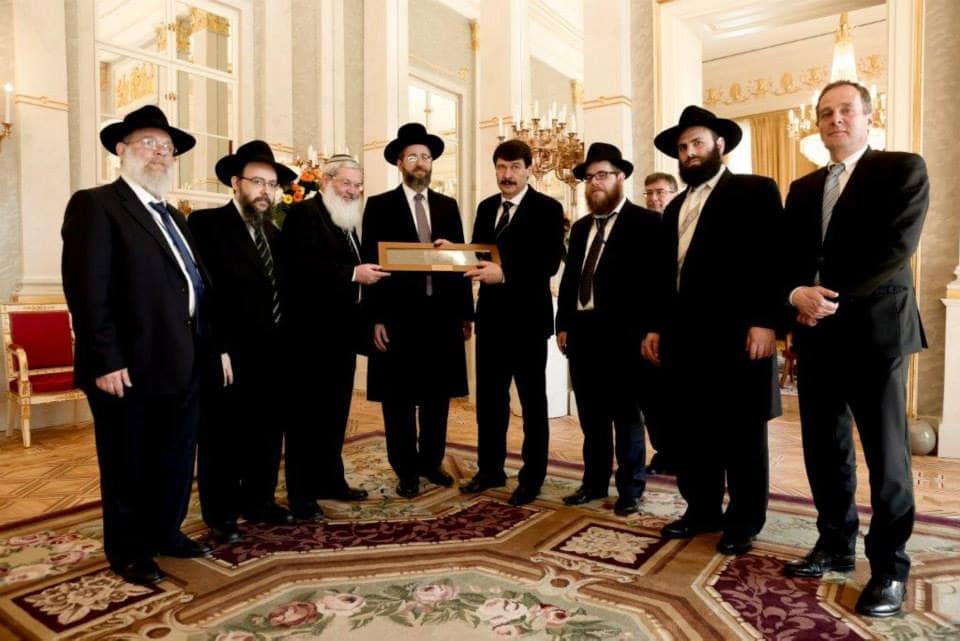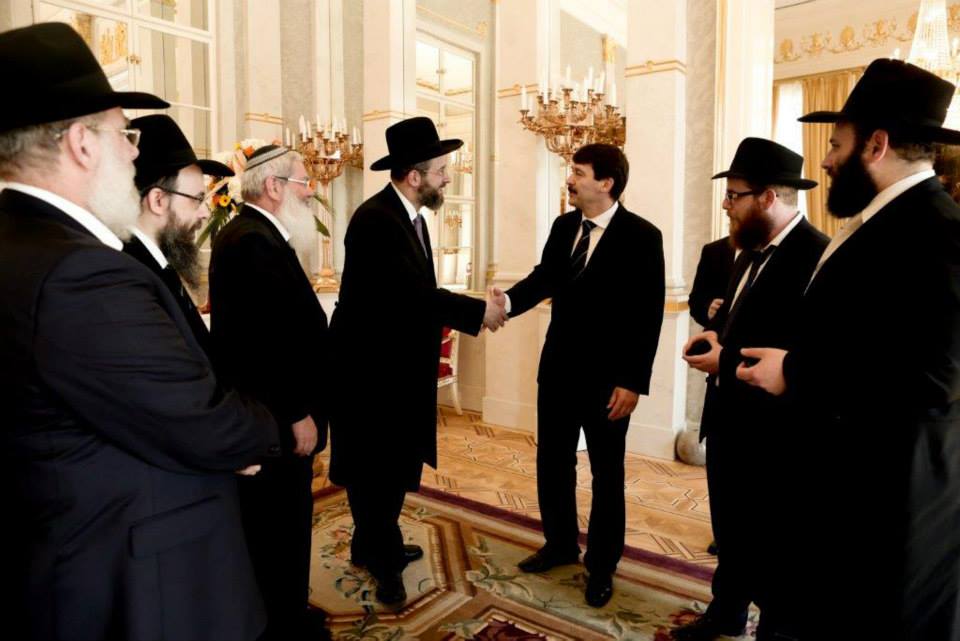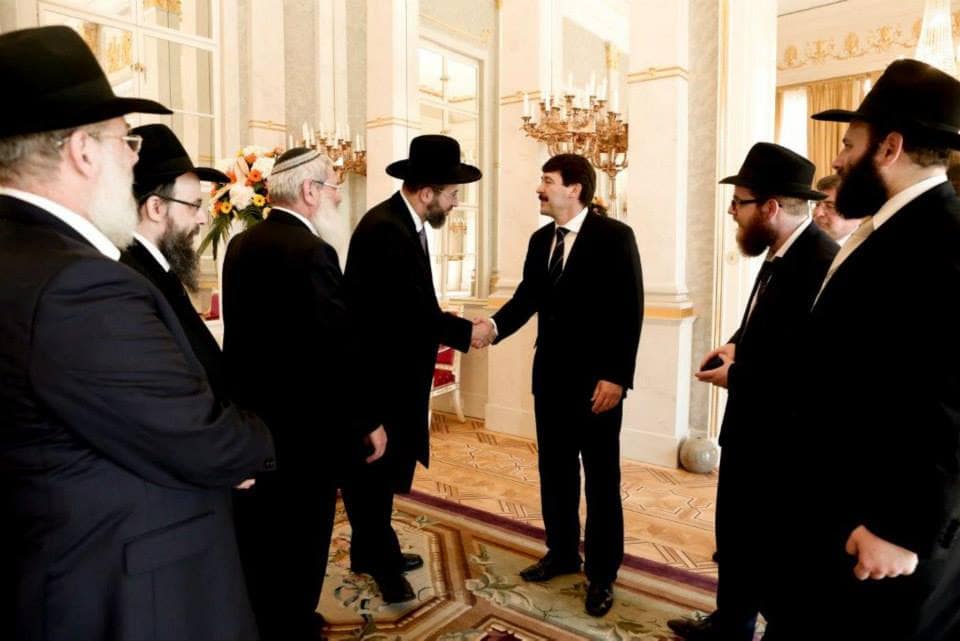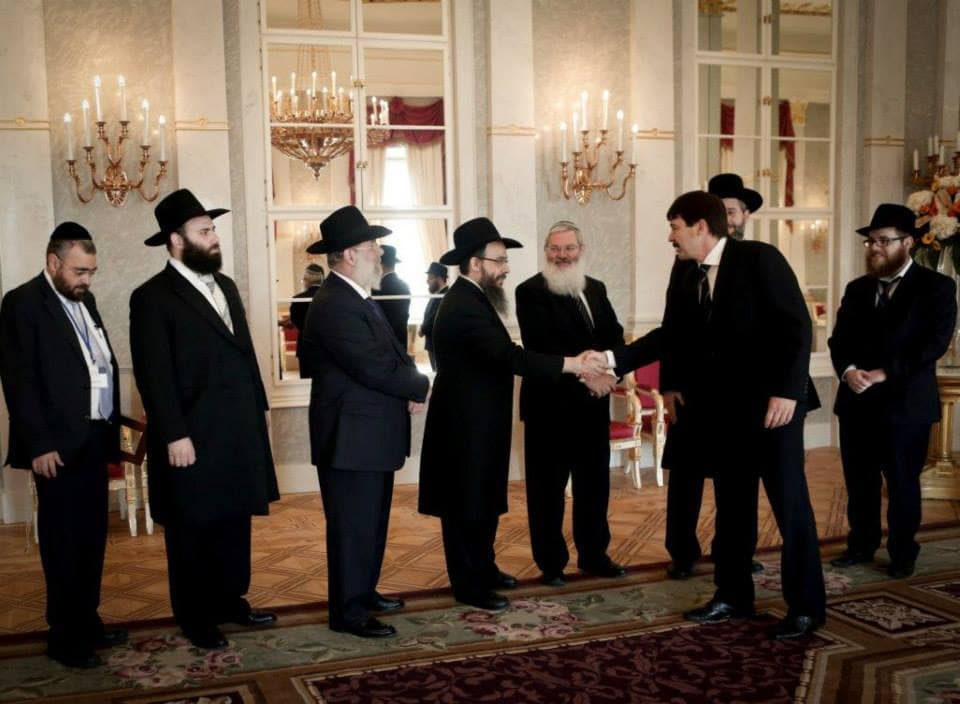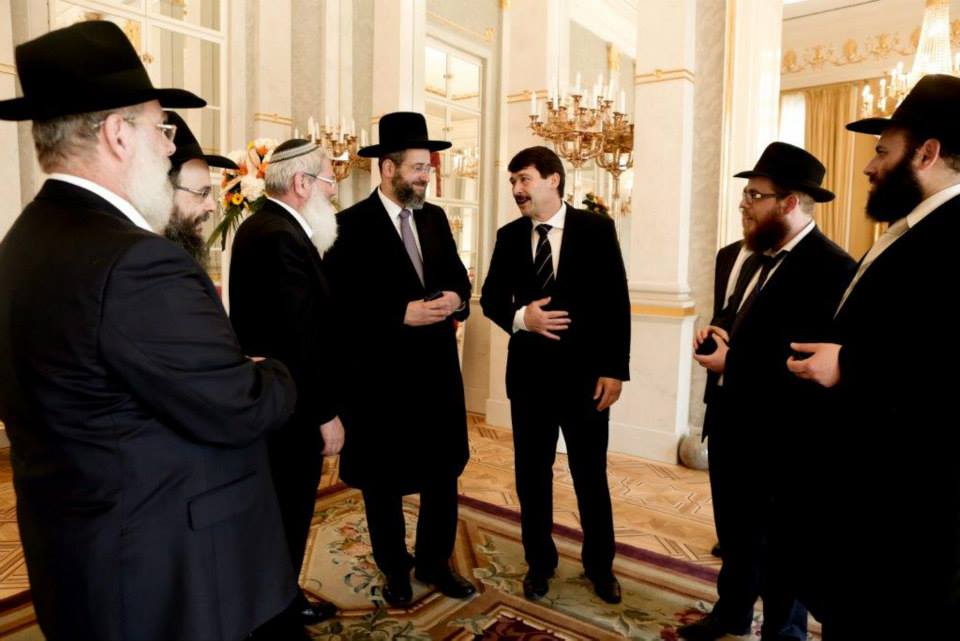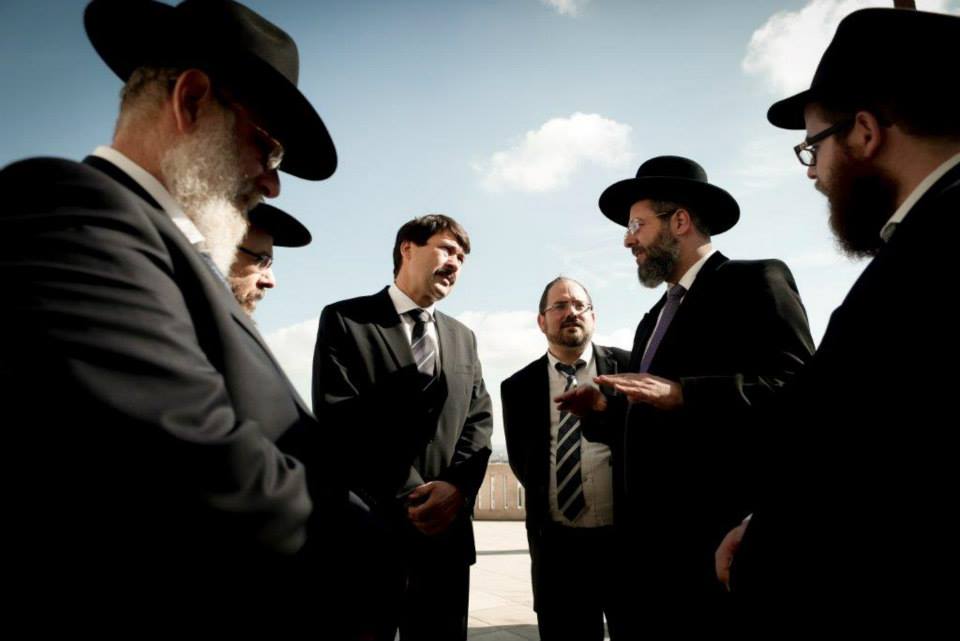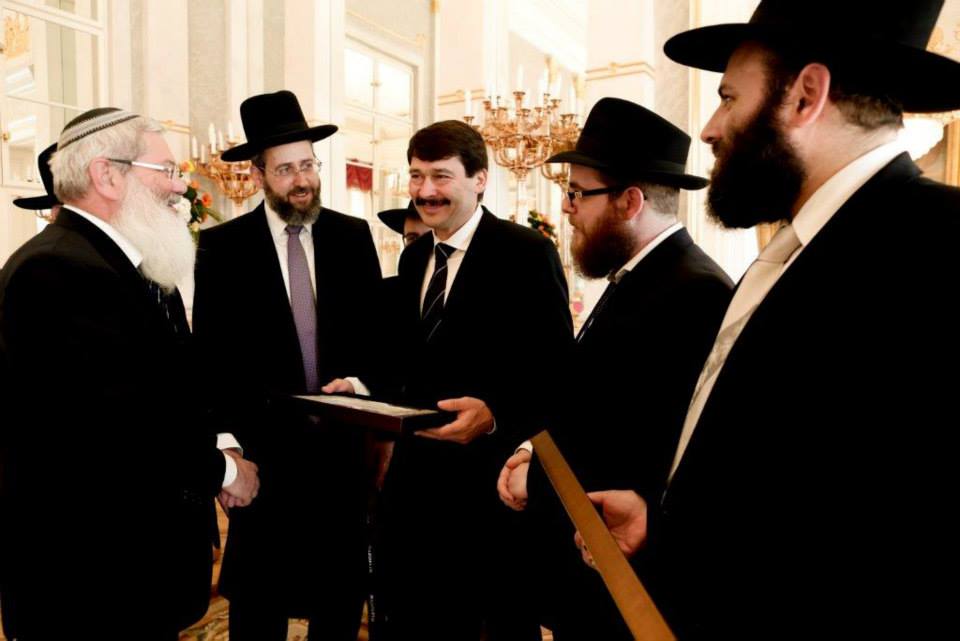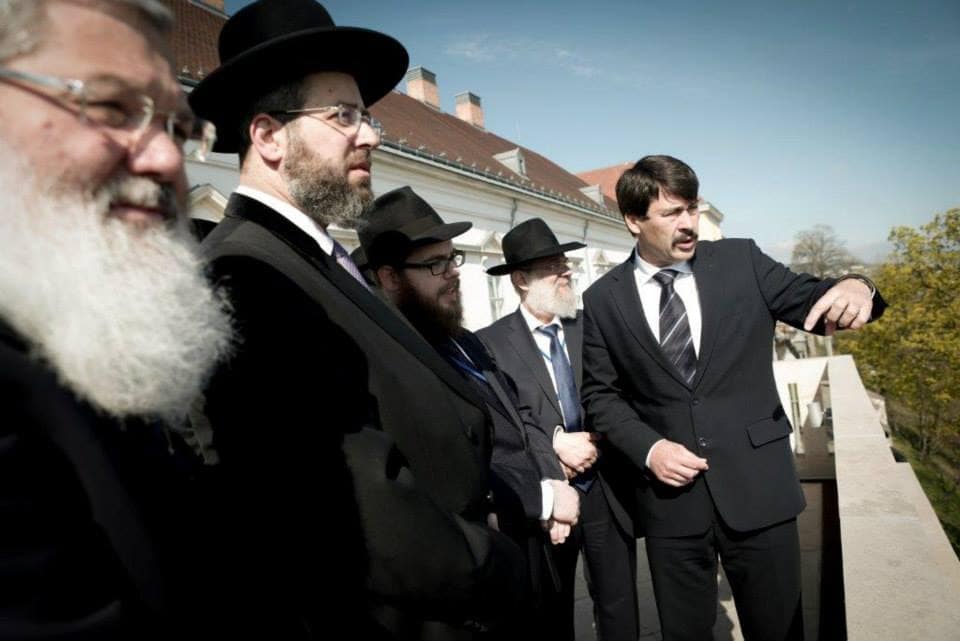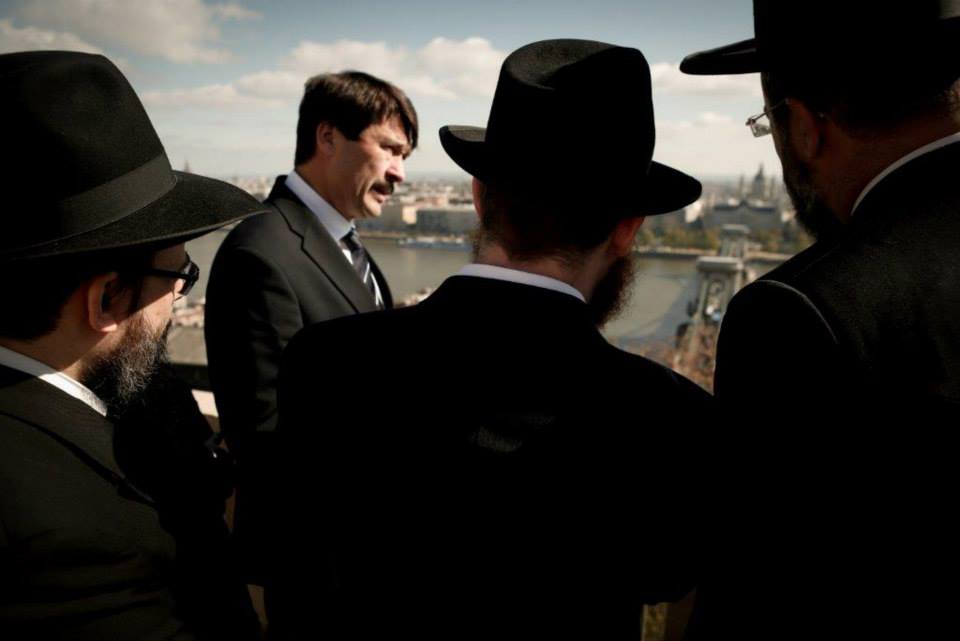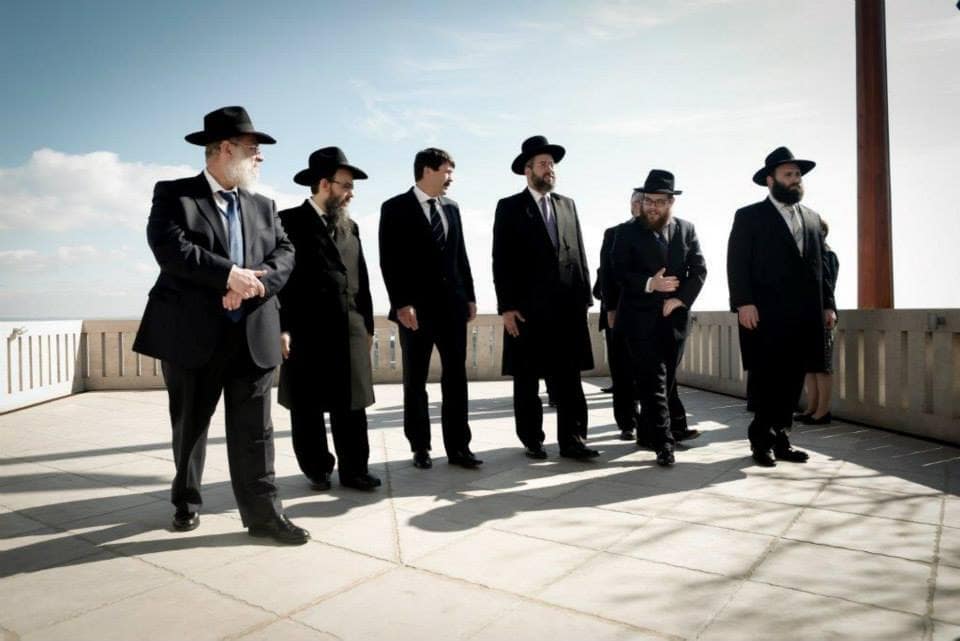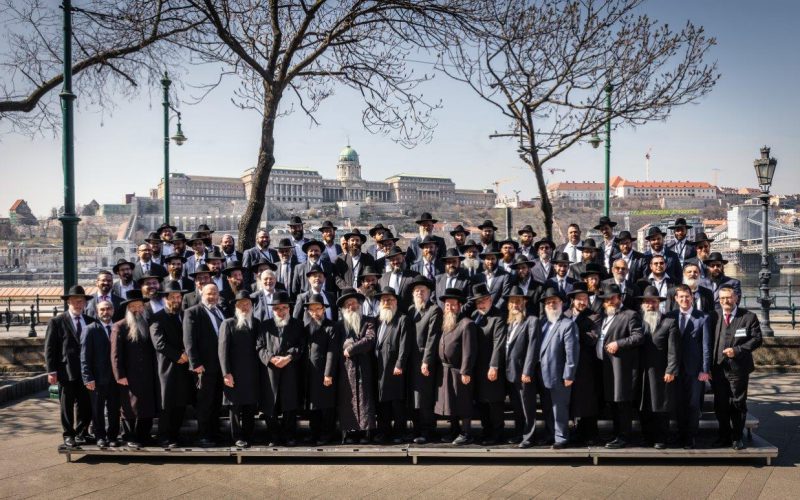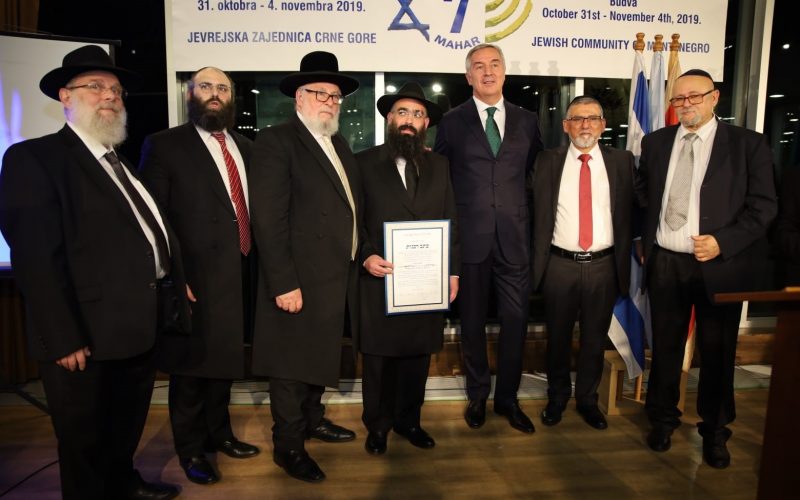What the president gave RCE Hungary?
The RCE presented Hungary’s President János Ader a collection of rare coins that were minted in Hungary by local Jews 800 years ago, “symbolizing the historic connection between the Jews and Hungary.”

The RCE presented Hungary’s President János Ader a collection of rare coins that were minted in Hungary by local Jews 800 years ago, “symbolizing the historic connection between the Jews and Hungary.”
Last Tuesday, March 25, 2014, a delegation consisting of the heads of the RCE, together with Israel’s Chief Rabbi David Lau, paid a visit to the presidential palace and met with Hungary’s president. Also present were Hungary’s Rabbi Baruch Oberlander, who is Av Beis Din of Budapest’s Chareidi Congregations, Rabbi Shlomo Kovesh of the EMIH congregation, Israel’s deputy minister of religious services Rabbi Eliyahu Ben-Dahan, and the RCE’s directors Rabbi Menachem Margolin and Rabbi Aryeh Goldberg.
The president expressed his deep appreciation for the work of Hungary’s rabbis in the country, adding that the Hungarian government is proud of its Jewish citizens and that it will do everything it can to enable the continuation of Jewish life with full freedom of religion.
He asked the delegation how he can help Hungary’s Jews more. Chief Rabbi Lau thanked him and asked that the Hungarian government respond with swift and severe punishments to those who incite hatred against the Jewish nation. Deputy Minister Ben-Dahan asked the president to influence the European Union to cease funding the Palestinian Authority, since the money is being allocated to finance terrorist activities.
The RCE’s directors thanked the president for the trust-building bridges he has created between the various sectors of Hungary’s population, and for his interest n continuing to assist the Jewish community.
At the end of the visit, which extended far beyond its scheduled time, the president gave the delegation a special presidential medallion. In return, Israel’s Chief Rabbi and Deputy Minister Ben-Dahan gave the president a gift of appreciation, designed with the symbol of Yerushalayim.
The president was visibly moved when the RCE presented him with a special gift of nine rare coins that were minted by Jews in Hungary approximately 800 years ago. “These coins represent the historical connection between Jews and the country of Hungary,” Rabbi Kovesh explained to him.
The coins were chosen by Avishay Geller of the Kedem Auction House in Yerushalayim, one of the world’s largest auction houses dealing in Judaica. “These coins,” he explained, “are an archeological treasure, dating from approximately the 13th century. It is interesting to note that most of the coins feature the Hebrew letter alef, ches, or tes. Apparently, a Jewish minter would place the initial of his name on every coin he produced. There is no question that this is a most unique collection.”
Jews first came to live in the area that is today Hungary in the first century C.E., when King Decebalus of Dacia (which included much of the area that today is Hungary) permitted the Jews to settle in his land in return for the assistance they gave him in battling the Romans. The first mention of Jews living in Hungary dates back to the year 960 C.E., in a letter written by Cordoba’s Jewish minister Chasdai ibn Shaprut to Yosef, king of the Khazars, in which he made mention of “the Jews who live in the land of the Hungarians.”
As the delegation took leave of the president, the president’s chief of staff asked Chief Rabbi David Lau, Deputy Minister Ben-Dahan, and the RCE rabbis to accompany him, for he had a question that called for their expertise. When they came to the entrance of the palace, he showed them a stone that had Hebrew letters etched into it.
He explained that, 400 years ago, the Jewish ghetto was not far from the palace, but it had since been razed. When the Nazis occupied Hungary, the Germans destroyed part of the palace. While it was being rebuilt, this stone was discovered. Apparently, it had been used in the original construction of the palace.
Now, the chief of staff wished to know the significance of the words etched on the stone. The rabbis replied that it seems to have been part of a plaque that had been hanging in a synagogue at one time. The chief of staff remarked that each day, as he passes by this stone as he enters the palace, he is reminded of the importance of Hungary’s Jewish community.
After their visit, the rabbis returned to the conference, where the last day was devoted to finding solutions for various challenges that European rabbis encounter. Rabbi Shimon Elituv, member of Israel’s Chief Rabbinate Council, fielded many of the questions. “Before you run to convert non-Jews to Judaism,” he told the Rabbanim, “let’s do our best to hold on to those who were born Jewish and are in danger of assimilating. The statistics of assimilating Jews that we see today are more horrifying than the physical Holocaust of the last century.”
Rabbi Elituv also pointed out that, during this conference, the RCE has given the “soldiers” – the European Rabbanim – many tools to deal with these issues, and to stem the tide of assimilation, at least in part. “Let us do whatever we can,” he said, “and then Hakadosh Baruch Hu, the Master of all, will complete the hard work.”
The rabbis attending the conference were astounded by the pure genius displayed by the Rishon Letziyon, Harav Yitzchak Yosef, who delivered an hour-and-a-half shiur on the topic of hilchos Pesach. Many of the participants remarked that at times they felt like they were in the presence of his great father, Maran Harav Ovadiah Yosef, zt”l.
